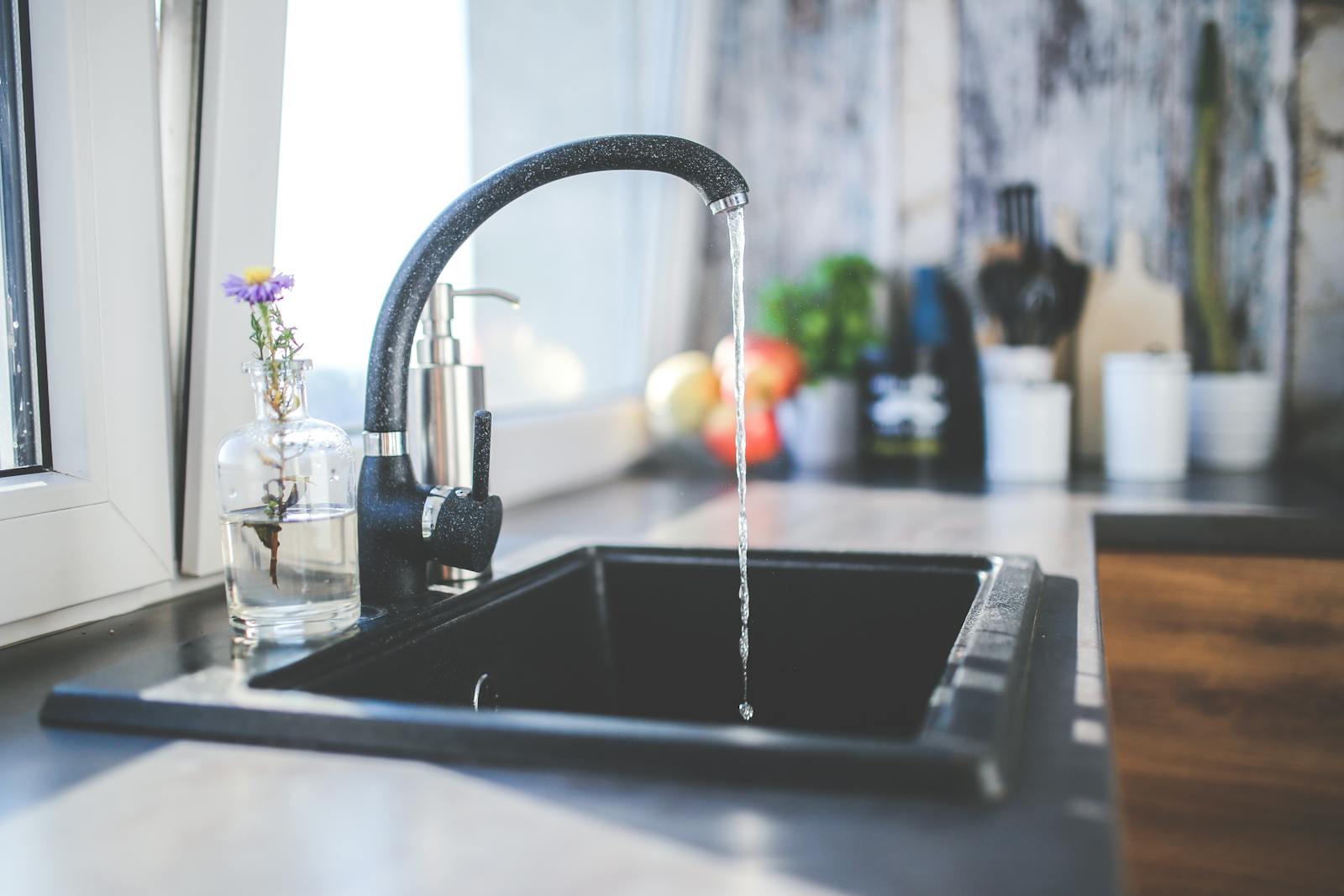Welcome to the land down under, where the sun shines bright, the beaches beckon, and the tap water sparks curiosity and conversation. If you’re a newcomer to Australia or simply a curious soul, you might have pondered over a seemingly trivial yet intriguing question: ‘Is bathroom tap water safe to drink in Australia?’ The answer is a resounding yes, with a few caveats to consider.
Australia prides itself on its stringent water quality standards, enforced by regulatory bodies to ensure that tap water across the country meets the health and safety guidelines necessary for consumption. However, like a plot twist in a gripping novel, water quality can indeed vary depending on your location and the infrastructure in place. In the more remote or rural stretches of this vast continent, it’s wise to check with local authorities or consider a water filter if the quality of the liquid life force is in doubt.
Let’s dive into the heart of the matter. The water that flows from the bathroom tap is typically sourced from the same place as the kitchen tap water—the municipal water supply. This means that both taps are connected to the same plumbing system, drawing water from centralized sources such as reservoirs, rivers, or groundwater. But here’s where it gets interesting: the plumbing infrastructure may differ, with separate pipes leading to the bathroom and kitchen fixtures. This subtle difference can sometimes affect the taste or quality of the water, giving each tap its unique character.
Can you safely drink the water from the bathroom tap
Absolutely, especially during those late-night thirst quenches or mid-shower epiphanies. Australia’s tap water undergoes rigorous testing and meets stringent health standards, making it safe to drink from any tap in your home. Yet, there are exceptions, particularly in rural locations or homes where the plumbing systems have seen better days and may have been compromised by contaminants.
Recent research by the Australian National University sheds light on a sobering reality: more than 600,000 Australians lack reliable access to safe or good quality water. Among them, a significant number are regularly consuming water with unsafe levels of various contaminants. While many Australians enjoy access to safe tap water, the quest to address disparities in water quality is a socio-environmental challenge that remains at the forefront.
If you’re nestled in an urban community with modern plumbing, you can rest assured that your tap water is likely safe to drink. However, if you’re residing in a rural area or an older abode with aging pipes, you might want to think twice before filling your glass from the bathroom tap.
Why does bathroom tap water sometimes taste different from its kitchen counterpart
The answer lies in a myriad of factors. Older homes with their vintage plumbing materials and fixtures may contribute heavy metals to the water supply, while sediment or rust in aging pipes can alter the taste and potentially harbor bacteria or other pathogens. The distance from the water heater can also play a role, affecting the temperature and mineral content of the water. A sweet taste may indicate higher levels of calcium, magnesium, and potassium, while a metallic or bitter taste could be a sign of sulfur, iron, or manganese content.
Another factor is the frequency of use. Bathroom taps that see less action may deliver water with a stale taste due to stagnation. If you’re concerned about the quality or taste of your bathroom tap water, or simply aspire to provide your home with the purest water possible, a water filter from Aquasafe could be your knight in shining armor. These advanced filtration systems are designed to remove impurities and ensure that you have access to pure, great-tasting water straight from your tap.

Julius Ballanco, Editorial Director for PM Engineer magazine and a recognized national plumbing expert, offers an intriguing explanation for the perceived difference in water quality between kitchen and bathroom faucets. He reveals that faucet manufacturers have invested millions into researching the quality of drinking water delivered from various faucets, leading to a national consensus standard, NSF 61, that outlines the criteria faucets must meet.
Some people swear by their kitchen faucets for the best water quality, while others are loyal to their refrigerator’s water dispenser—even though both are fed by the same pipe. The research, however, tells us that the water quality from a kitchen faucet and a bathroom faucet is essentially the same, with variations between manufacturers. If you have the same brand for both faucets, you’re getting almost identical water from both.
What’s the real difference
It often comes down to temperature. Many people prefer their drinking water very cold, and the water from a refrigerator is chilled to perfection. In the bathroom, the water often starts cold due to prior use of the toilet and handwashing, which fools the brain into thinking it tastes better. Would you enjoy water at 100 degrees Fahrenheit? Probably not.
In most homes, the kitchen is the farthest from the water source, which means it takes longer to get that crisp, cold water flowing from the tap. Our bodies can detect a mere three-degree difference in water temperature, and water sitting in pipes will naturally warm to room temperature. In contrast, water in underground pipes remains at a cooler 55 degrees Fahrenheit, or even 45 degrees during winter, providing that refreshing chill we often crave.
Delving into the psychology of water consumption, we find that our senses play a pivotal role in our preferences. Temperature, taste, and smell are the trifecta of factors that influence our inclination towards kitchen tap water over other sources within our homes.
Let’s begin with temperature, the silent persuader. It’s a well-known fact that many of us have a penchant for cold water. The refreshing sensation of cool water cascading down our throats is undeniably more appealing than a lukewarm gulp. This preference is rooted in our biology; our bodies can detect even the slightest variation in water temperature, as little as three degrees Fahrenheit.
This sensitivity means that the cooler water from the kitchen tap, which has traveled a greater distance from the water heater and retained its chill from the underground pipes, is often more satisfying. The kitchen, typically being the farthest from the water source, ensures that the water has ample time to cool, providing that crisp taste we crave.
The complexity of taste doesn’t end there. The presence of minerals like calcium, magnesium, and potassium can impart a sweet flavor to the water, while sulfur, iron, or manganese can contribute a metallic or bitter taste. These elements are naturally occurring in water but can be more pronounced in areas with older plumbing or specific geological conditions. It’s these subtle nuances that can make the water from the kitchen tap more palatable than that from the bathroom.
Smell is another critical factor. Unpleasant odors can emanate from tap water, affecting our perception of its quality. Common culprits include the smells of sewage, sulfur, musty odors, metallic scents, fishiness, and chlorine. Each of these odors has a distinct cause, ranging from bacteria build-up in the drain to the presence of hydrogen sulfide gas or contamination from organic matter. These smells can be so off-putting that they deter us from drinking the water, regardless of its safety.
Addressing these odiferous issues often requires a multi-faceted approach. For sewage-like smells, cleaning the drain with baking soda and vinegar followed by boiling water can eliminate bacteria causing the odor. If the scent is isolated to hot water, it may be necessary to disinfect the water heater or replace components like the magnesium anode to reduce hydrogen sulfide gas production. Musty smells, on the other hand, may indicate the need to sanitize the entire plumbing system, including water softeners.
For those looking to improve the quality of their tap water, Aquasafe’s water filters offer a solution. These advanced systems are designed to remove impurities, ensuring that every sip from the tap is as pure and refreshing as nature intended. By investing in a water filter, you not only enhance the taste and smell of your water but also contribute to the health and well-being of your household.
Our affinity for kitchen tap water is more than just a habit or convenience; it’s a sensory adventure. The coolness, freshness, and purity of the water all play a part in this preference. As we explore the depths of our household water supply, let’s not forget that water quality is not only about safety regulations but also the sensory delight it offers. So, when you next pour a glass of water, ponder the path it traveled to reach your tap and the factors that have influenced its essence. Here’s to the pure joys of a revitalizing glass of water, directly from the kitchen tap.
Related posts:
Is It Safe to Drink Bathroom Tap Water in Australia?
Why Does My Water Smell? 6 Common Smells & Their Causes





